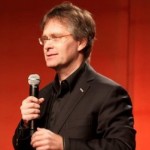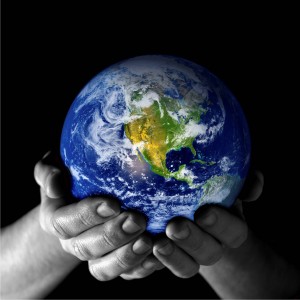A Letter to the World Spirituality Community from Marc Gafni
Wow, what a time it is! The world is in turmoil on virtually every level of reality even as it is pregnant with possibility and promise. The nature of the challenges that we face is, for the first time in the history of the cosmos, global in magnitude. The threat is a global threat to our very survival. The promise is the emergence of a global civilization, one rooted in an evolution of love beyond anything the world has ever seen. We need now, more then ever, a World Spirituality based on Integral principles.
New World Conditions Catalyze the Evolution of a New World Spirituality
The world faces world problems. Gone is the era where local kings, seers, and shamans dealt with their local issues. There are no more exclusively local issues. Everything affects everything else. Everything is interconnected and interdependent.
Of course, from a spiritual perspective, viewed through the eye of the heart and the eye of the spirit, this was always the case. However, the essential interconnectedness of all of reality was not apparent. The King of Burma had no felt sense or evidence that his actions and decision would affect the ancient Indians who populated the Americas.
Now, however, the underlying wholeness of all of reality, the inextricable interpenetration of all of its parts, is becoming visible to the naked eye. One needs to look only at environmental and ecological issues to realize the essential interconnectivity and indivisibility of it all.
New world conditions are always precisely what catalyze the next evolutionary leap. As we realize that the challenges that confront us are world challenges, we realize that we must evolve a World Spirituality to meet those challenges. But not only to meet those challenges.
World spirituality is not just a solution to problems; it is also the delighted expression of the evolving Eros of consciousness realizing its potential to dance in the dialectical tension between unity and diversity. We are unique and autonomous as people and faith systems. We are also One in communion and even union with each other. Both are true. Autonomy and communion, diversity and plurality, the One and the many dance in higher integration as World Spirituality begins to emerge.
Paradoxically it is our very uniqueness, which is the key to our communion. The realization of World Spirituality is that Uniqueness, not merely sameness, is the currency of connection. Each individual and each unique collective expressed in a religion or great body of knowledge is a puzzle piece in the emergent wholeness that is waiting to be evolved by us. Spirit awaits our unpacking. This is the evolutionary impulse manifesting as Spirit in Action. Each tradition has a particular medicine, which is crucial to the health of the whole.
World Spirituality is Not the shared Truth of Premodern Religions
But it is not only the premodern religions that we turn to create world spirituality. Each great system of knowing, premodern, modern, and postmodern, participates in the forging of a World Spirituality. The emergence in modernity of science, of the evolution of the social sphere expressed in the rise of democracy, human rights, and the ascension of the feminine, are all key components in the formation of a World Spirituality. Can you imagine today a serious World Spirituality without taking into account the implications of Neuroscience, what I call Neuro-dharma, are on our understandings of ritual and spiritual practice? Can you imagine today a World Spirituality without the emergent insights of post modernity with its manifestations as multiculturalism and pluralism, without its profound understanding of the distinction between surface structures and depth structures and the role of interpretation and hermeneutics in creating all forms of spiritual and social culture?
Particularly can one imagine World Spirituality without the evolutions that have taken place in our understanding of Evolution? More important than anything, can one imagine a World Spirituality without a profound embrace of the evolutionary context within which we live and which depends on us? The evolutionary context–the realization that consciousness is evolving, and that every generation is responsible for giving its own unique gift to the evolution of consciousness–is the animating Eros in our attempt to give voice and language to the emergence of a World Spirituality that is ALREADY HAPPENING all over the globe.
World Spirituality is Not Interfaith
World Spirituality is not interfaith. It is a major step beyond interfaith that transcends and includes the evolutionary strides made and still being made by that great movement of spirit. If one were to map the stages of spirit’s evolution from the premodern religions to the contemporary emergence of a World Spirituality in which we are participating, they might be something like the following:
1. In the first stage, when the classical religions reigned supreme in the age before the Western Enlightenment, each religion believed that it was supreme or, at the very least, superior to all the other religions. This superiority created in its wake a sense of entitlement, the rationalization for massive oppression, and more often than not, a license to kill. This stage of religious development has been called mythic religion.
2. The second stage emerged with the advent of modernity. Modernity then came along and weakened the authority of the religions by demanding evidence. Moreover, modernity pointed out that many of the propositions which religions had held to be dogmatic truths were, in fact, factually wrong. These ranged from the view of the universe that the church held as dogma, which placed the earth at the center of all things (and was later falsified by Galileo’s telescope), to a dogmatically held belief regarding the structure of the human body (which was falsified by the dissections and autopsies of renaissance science), to the belief in the divine right of kings (which was undermined by the rise of the Western Enlightenment). Religions were substantively weakened. Secularization began its creeping annexations of the world mind. Within the religions, more progressive voices emerged. However, those voices often sought to remake the religions in the image of modernity, and lost their authentic mooring in the core spiritual matrix of the religion. At the same time, there were those who both opened to modernity and maintained a strong and authentic connection to their core religion without formally working out the contradiction between the two commitments. This stage in the development of spirit has been called rational religion.
3. The third stage is perhaps characterized by the interfaith movement and has been called pluralistic religion. The Interfaith movement made a beautiful contribution in getting people talking to each other from the different faith traditions. This movement itself has two distinct expressions. In one expression, what I will call the humanistic expression, the implicit assumption is that the religions could not be genuinely reconciled at a deep theological level, but if people could just get along at a human level beyond doctrinal difference, this itself would create a mutuality of respect and recognition which would serve to deepen love and lessen religious conflict of all forms. In a second expression of Interfaith, what I will call the shared truth or perennial expression, the core issues that separated the religions mattered less because the leaders of Interfaith dialogues did not truly take the unique teachings of each of the great traditions, including their own, seriously. Someone once said that the early interfaith dialogues were between Jews who did not believe in Judaism and Christians who did not believe in Christianity–who got together and discovered they had a lot in common.
This expression of the Interfaith movement, however, did make a highly significant contribution to the realization that what we have in common is far greater than what divides us. The crucial developmental insight was that the shared truths in all the religions are their essential teaching. This shared truth both overrides and undercuts the far less important doctrinal, theological, and value distinctions between the religions. The core aspects in the matrix of this highly intelligent and profound interfaith work were and are the key insights of perennial philosophy. The perennialists, led by the like of Fritzof Schuon and his circle of students, and championed effectively and eloquently by Huston Smith, pointed to the essential shared depth structures, which existed in all the traditions. And let it be said clearly. The perennnialist camp and its highly critical insights have made a pivotal contribution towards the evolution of consciousness. And let it be said clearly. The perennial insights are an important part of the emergent World Spirituality.
However, let it be understood no less clearly that the shared perennial truths found in all or most of the great religions are only the first step in the emergence of World Spirituality. Perennial Philosophy is a part, but in no way the whole, of World Spirituality.
With love,
Dr. Marc Gafni
(stay tuned for part 2 later this week!)
 Dr. Marc Gafni holds his doctorate from Oxford University and has direct lineage in Kabbalah. He is a Rabbi, spiritual artist, teacher, and a leading visionary in the emerging World Spirituality movement. He is a co-founder of iEvolve: The Center for World Spirituality, a scholar at the Integral Institute, and the director of the Integral Spiritual Experience, as well as a lecturer at John F. Kennedy University. The author of seven books, including the national bestseller Soul Prints and Mystery of Love, Gafni’s teaching is marked by a deep transmission of open heart, love and leading edge provocative wisdom. Gafni is considered by many to be a visionary voice in the founding of a new World Spirituality and one of the great mind/heart teachers of the generation.
Dr. Marc Gafni holds his doctorate from Oxford University and has direct lineage in Kabbalah. He is a Rabbi, spiritual artist, teacher, and a leading visionary in the emerging World Spirituality movement. He is a co-founder of iEvolve: The Center for World Spirituality, a scholar at the Integral Institute, and the director of the Integral Spiritual Experience, as well as a lecturer at John F. Kennedy University. The author of seven books, including the national bestseller Soul Prints and Mystery of Love, Gafni’s teaching is marked by a deep transmission of open heart, love and leading edge provocative wisdom. Gafni is considered by many to be a visionary voice in the founding of a new World Spirituality and one of the great mind/heart teachers of the generation.









